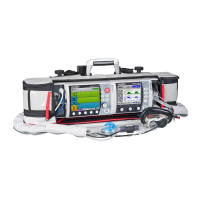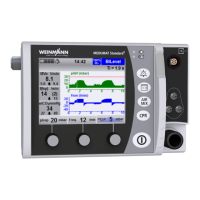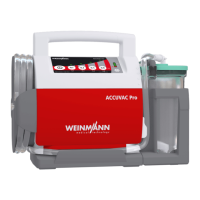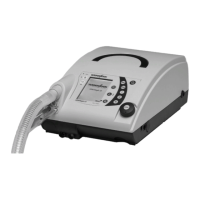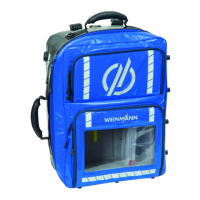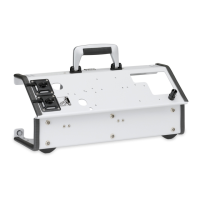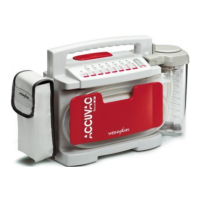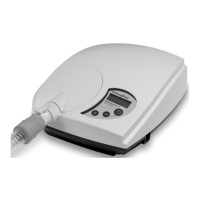
Do you have a question about the Weinmann MEDUCORE Standard2 and is the answer not in the manual?
| Brand | Weinmann |
|---|---|
| Model | MEDUCORE Standard2 |
| Category | Medical Equipment |
| Language | English |
Explains the meaning of Danger, Warning, Caution, and Notice symbols.
Details the monitoring and therapy functions of the MEDUCORE Standard².
Defines the primary use and target patient groups for MEDUCORE Standard².
Specifies the necessary qualifications and training for device operators.
Covers crucial safety guidelines regarding qualification and device usage.
Provides a visual and textual identification of the device's main components.
Details the functions and designations of the device's control panel buttons and ports.
Explains the device display, including start menu, AED mode, manual mode, and monitor mode.
Describes the battery components and how to interpret its charge and status indicators.
Outlines accessories like master cables, pads, and paddles for defibrillation and cardioversion.
Provides instructions for mounting the device, including in its protective transport bag.
Details how to properly stow components and accessories within the protective transport bag.
Explains how to connect the device to a power supply, including battery insertion and charging.
Covers general instructions for battery use, charging, and replacement.
Provides a detailed step-by-step guide for performing a complete device function check.
Guides the user through the procedure for powering on the device and its self-test.
Describes how to navigate menus and interact with device functions using controls.
Details how to select the appropriate patient group for device presets and settings.
Covers the steps for preparing shock delivery using either defibrillation electrodes or paddles.
Explains how to perform semi-automatic defibrillation using AED mode with electrodes.
Guides the user through performing manual defibrillation with electrodes or paddles.
Explains how to perform cardioversion, synchronizing shock delivery with the ECG.
Describes how to prepare and perform pulse oximetry monitoring using the sensor.
Covers the preparation, recording, and assessment of 12-lead ECG data.
Explains how to prepare and conduct NIBP measurements, including interval and venous stasis modes.
Explains how to access and navigate the device's application menu.
Explains how to access and navigate the user menu for session-specific settings.
Details various user-configurable settings such as Alarm, ECG, SpO2, NIBP, Printer, Communication, System, and Device Information.
Explains alarm priorities, display methods, and how the device handles multiple alarms.
Lists high-priority alarms, their causes, and recommended remedies.
Addresses faults specific to defibrillation and cardioversion functions, including electrode and cable issues.
Provides instructions for updating the device's software via an SD card.
Details how to access the operator menu, including entering the access code.
Explains how to navigate through the operator menu options and settings.
Allows configuration of presets for AED mode, including energy levels and CPR parameters.
Covers the configuration of alarm limits and audio outputs for different patient groups.
Allows presets for shock energies, metronome, and CPR phase in manual defibrillation mode.
Enables adjustment of ECG curve display parameters like amplitude scaling, feed rate, and line filter.
Covers presets for blood pressure measurement and venous stasis, adaptable to patient groups.
Outlines the recommended intervals for device maintenance, battery checks, and replacement.
Provides detailed technical specifications for the device, including dimensions, weight, and operating conditions.
Outlines the technical parameters of the CARDIObiphasic defibrillation system.
Provides specifications for NIBP measurement, including manufacturer, measuring method, and ranges.
Explains the functional principle and characteristics of the CARDIObiphasic shock pulse.
